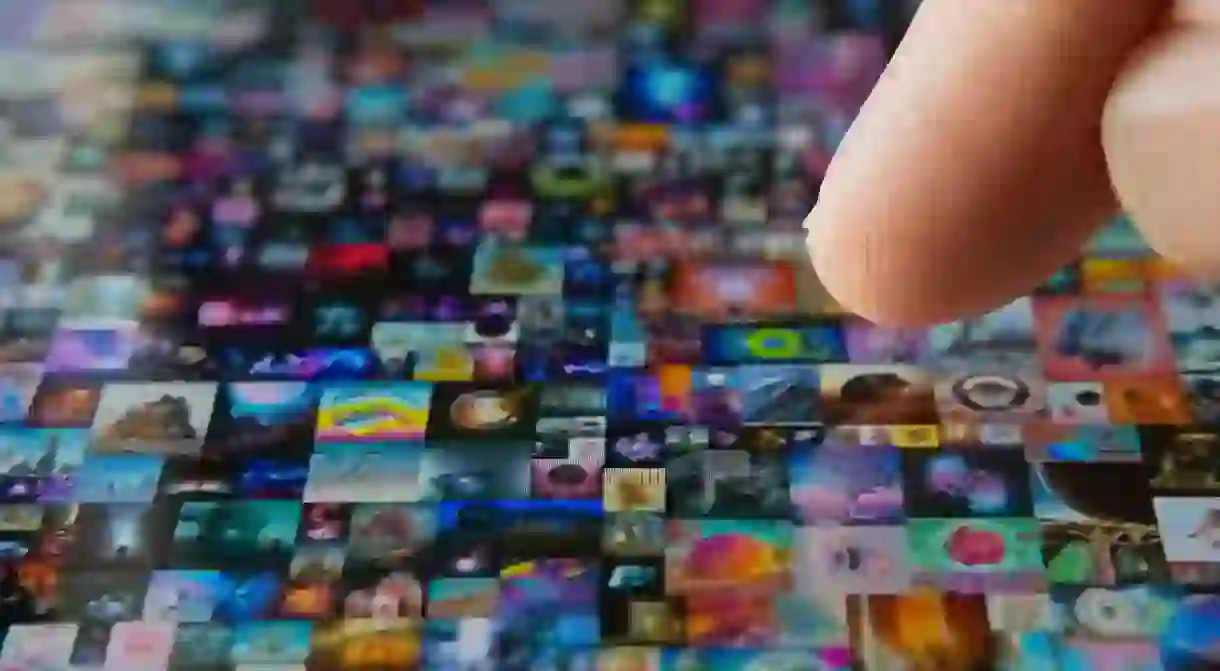What Are NFTs and Why Are They so Important?

In March this year, the digital artwork Everydays: the First 5,000 Days, by artist Beeple, sold at Christie’s for $69.4m. It’s only the most extraordinary example of the market in non-fungible tokens (NFTs) – an asset market that, in the first quarter of 2021, hit $22.5bn. Two successful Czech artists are now promoting their work via NFTs on the OpenSea platform. So what are NFTs and why are they important?

A non-fungible token, or NFT, is a piece of digital information, or “token”. It could be a picture, a song, a video clip – anything, in fact, that can be stored digitally. Fine, you say. I already have all my songs as digital files. I can copy any digital picture I like, so why would I pay a fortune (or anything at all)? But this is where NFTs get their value – they’re not copies but unique pieces.
NFTs are a cousin of cryptocurrencies, such as Bitcoin, and like those currencies, they’re stored on a blockchain. Blockchains are databases, with each unit of digital data a block and all the blocks chained together. Crucially, no single person has control. Instead all the users in the chain control what happens.

Each block contains three things. data, a hash, and the hash of the previous block in the chain. Let’s take the data first. For example: the data in a block in the Bitcoin blockchain charts a Bitcoin transaction, and contains the identity of the sender of the money, that of the recipient and the transaction amount. Meanwhile, the data in a block in a chain dealing with NFTs would contain information unique to a song, a video – or Beeple’s $69.4m artwork.
Now the hash. This is a unique digital record of what’s inside the block – a fingerprint, if you like – that’s created when the block is made and which has a unique ID number. Try to change any of the data within this hash and it’s no longer the same block; it will be renamed with a new number. Finally the hash of the previous block in the chain. Remember all the blocks are chained together. Each block also contains the information from the previous block, so the system will continually check that its predecessor in the chain still has the same number. Try to tamper or replicate the previous block and the chain is broken.

Now remember that this information is being shared across every user, every computer in the system. In the case of Bitcoin, that is the Ethereum blockchain, with more than 16,000 nodes, each automatically checking each new transaction to make sure nobody’s tampering with each block. This ensures the integrity of the system and avoids the “double-spend” risk of cryptocurrencies (that you’ve not sold your Bitcoins to customer A, then sold them again to customer B).
Only when more than half the computers on the global network give the nod is a transaction verified. So a forger would have to simultaneously fool thousands of nodes. This would take many times Google’s current computing capacity for just one transaction. In practical terms, it’s impossible, and safer than any bank systems.
So that’s the first level of security in a blockchain. NFTs offer a second level, and that’s why they’ve become so valuable in selling digital works of art such as Beeble’s Everydays. While Bitcoins are “fungible”, that is, interchangeable just like any currency (any Bitcoin can be swapped for another, just as any £10 note can be swapped for another as they have the same face value), each NFT’s non-fungible data makes the piece of art unique. That means all the computers on the huge network will continually check that the piece of art stored on the chain is the original Everydays, not a copy, and that it hasn’t been altered.

That’s why NFTs are important for consumers – they know they’re buying the real thing. For the producers, they are more exciting still. The information economy hasn’t been kind to artists – musicians and photographers seeing their work shared and copied for free. Even when pieces are bought, the big money is sucked up by gatekeepers such as Spotify or Amazon. What if there were a way for artists to cut out the middlemen, to seamlessly get their works to the customers, and get the rewards? Digital art, marketed online as NFTs, is that way.
As for the madness of the market… Well, what’s anything really worth? Why should a canvas-and-paint Picasso be “worth” $200m? Why do people own gold? It’s all about scarcity or uniqueness, and provenance – and NFTs provide these. As Beeple says: “This is art, there are no rules. At the end of the day if somebody will pay for it, then you can sell it.”
Culture Trip is launching an NFT Collection, The Art of Travel, at opensea.io/collection/culture-trip to offer artists an opportunity to showcase and sell their digital art to people around the world.













